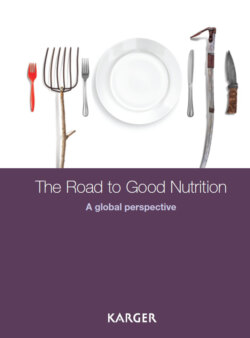Читать книгу The Road to Good Nutrition - Группа авторов - Страница 101
На сайте Литреса книга снята с продажи.
What ‘stunting’ indicates
ОглавлениеStunting is defined as inadequate linear growth, and this is due to the fact that nutrient intake does not meet nutrient needs. Furthermore, nutrient needs may be increased by illness, and illness also reduces appetite and interferes with nutrient utilization, thus increasing the difficulty of meeting nutrient needs with existing nutrient intakes. Stunting is a relatively easy indicator to measure, and reflects undernutrition during a critical period of development, in particular from conception until two years of age (i.e., the first 1,000 days of life). Inadequate nutrition during this period has severe consequences for life, because many developmental processes occur only during certain stages of life, and cannot (re)occur later in life.
Stunting develops during life in utero and the first two years after birth. It is a process of suboptimal growth and development that gradually accumulates to such an extent that body length is below that of 97.7 percent of children in the reference population. Children born with a low birth weight (<2500 g) due to restricted intrauterine growth are at great risk of remaining stunted. Beyond 24 months of age, stunting prevalence may still increase, but at a much slower pace.
United Kingdom Secretary of State for International Development Justine Greening concludes the successful Nutrition for Growth conference, where world leaders gathered with businesses, scientific and civil society groups, committing to a historic reduction in undernutrition.
Soucre: Marisol Grandon/DfID
Malawi president Joyce Banda at the Nutrition for Growth conference in London, June 8, 2013
Soucre: Marisol Grandon/Department for International Development
